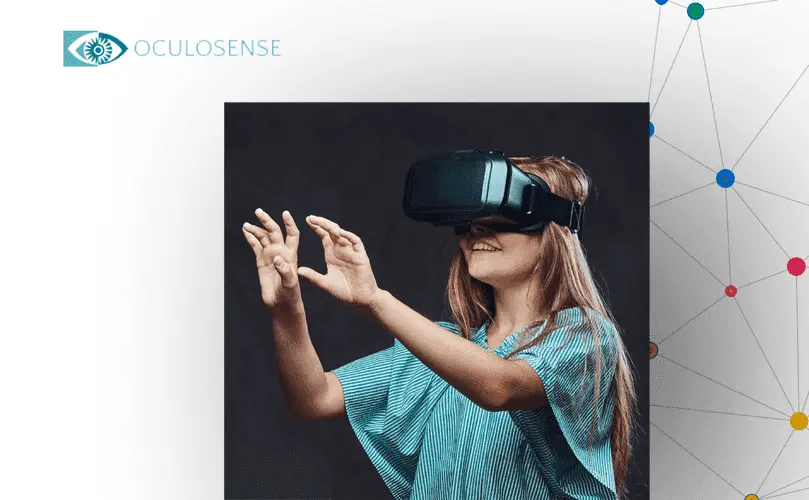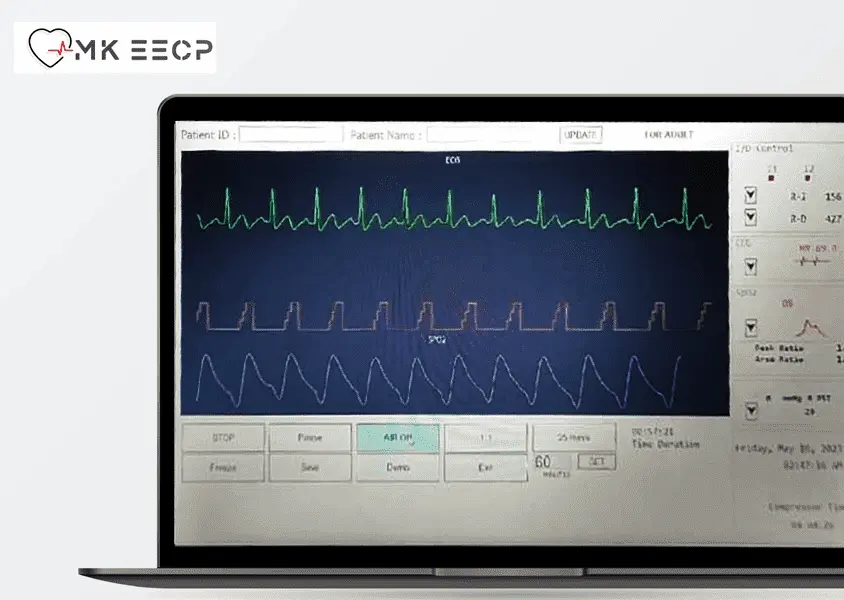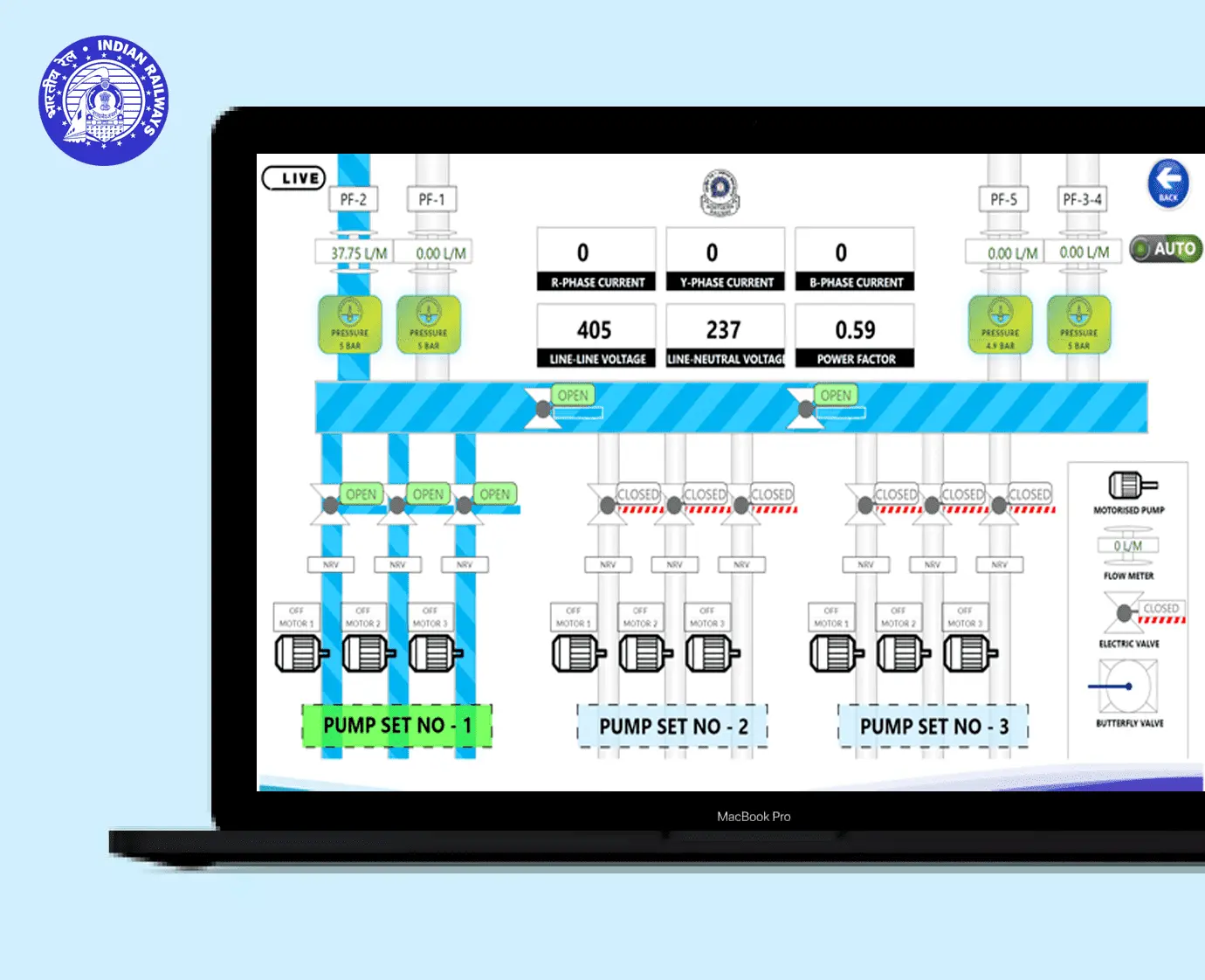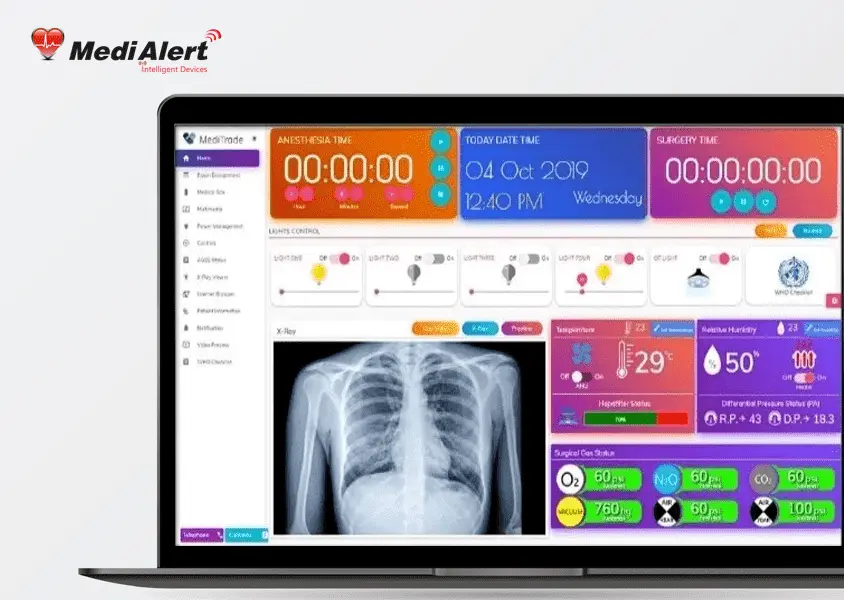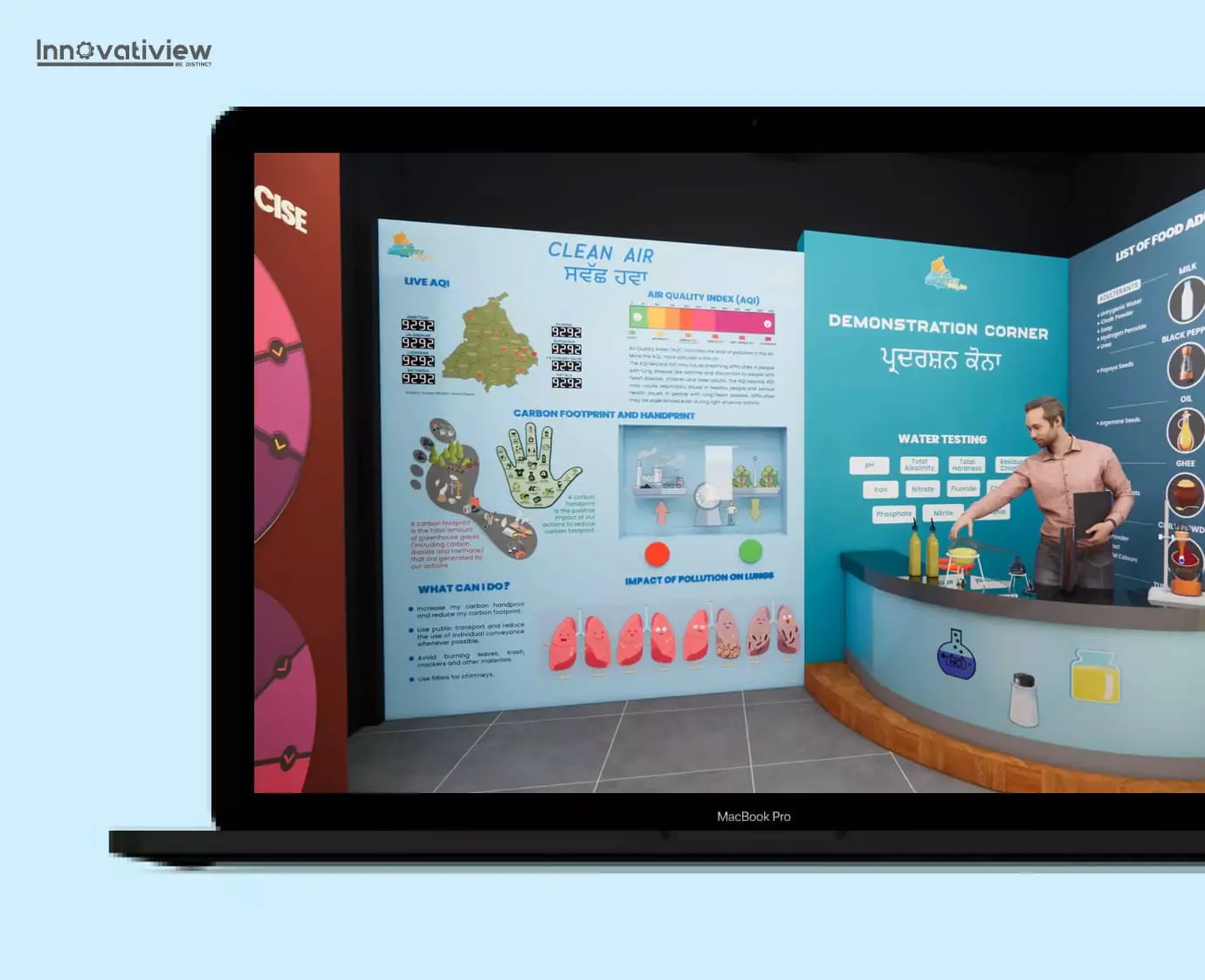Frequently Asked Questions
What are IOT Solutions?
- IoT connects objects to the Internet for enhanced functionality.
- They enable automation, control, and data exchange between devices.
- Smart homes, wearable devices, and industrial automation are examples of IoT solutions.
- Smart homes, wearable devices, and industrial automation are IoT solutions.
- Improves efficiency, productivity, and decision-making processes.
- Create a network of interconnected devices and systems with sensors and data analysis.
- IoT solutions optimize resource usage and improve user experiences.
- Challenges in IoT include security, data management, and interoperability.
- Industries are adopting IoT solutions to streamline operations and increase productivity as well as profitability.
- Industries are adopting the Internet of Things to simplify business operations to increase productivity and profitability.
How can IOT Solutions boost my business?
- IoT solutions can improve operational efficiency by automating processes and optimizing resource usage.
- Offers real-time monitoring and data analysis, allowing businesses to make informed decisions.
- IoT solutions enhance customer experiences by providing personalized and interactive services.
- Enhance customer experiences by connecting devices and systems by providing personalized and interactive services.
- They enable predictive maintenance, reducing downtime and extending the lifespan of assets.
- IoT solutions enhance supply chain management by providing real-time visibility and tracking capabilities.
- They enable remote monitoring and control, allowing businesses to manage operations from anywhere.
- IoT solutions enable data-driven insights, helping businesses identify trends, patterns, and opportunities.
- They enhance safety and security through real-time monitoring and alerts.
- By embracing the Internet of Things, businesses can stay competitive and ready to adapt to varying market demands.
What types of industries can benefit from implementing IoT solutions?
Manufacturing: IoT solutions optimize production processes, enable predictive maintenance, and improve supply chain management.
Healthcare:Helps to enhance patient monitoring, enable remote healthcare services, and improve asset tracking.
Agriculture: The Internet of Things facilitate precision farming, monitors crop conditions, and optimizes water and resource usage.
Transportation and Logistics: IoT technology improves fleet management, promotes real-time tracking, and enhances supply chain visibility.
Energy and Utilities: IoT reduces energy consumption, allowing smart grid management and remotely improving asset monitoring.
Retail: Retail Inventory Management is simplified with IoT, enabling personalized shopping experiences and improving customer engagement.
Smart Cities: IoT has an on infrastructure and smart cities to improve urban infrastructure, enhance public safety, and optimize resource usage.
Hospitality: IoT solutions enhance guest experiences, enable smart room automation, and improve energy efficiency.
Automotive: IoT's role in the automotive industry facilitates connected cars, enhances driver safety, and improves vehicle diagnostics.
Financial Services: IoT changes the banking and financial service industry, enabling personalized banking experiences and enhancing fraud detection.
What are some common challenges companies face when adopting IoT solutions?
Security: Companies face challenges in ensuring the secure transmission and storage of IoT data to protect against cyber threats.
Data Management: Handling and processing large volumes of IoT-generated data poses challenges in terms of storage, analysis, and extracting meaningful insights.
Interoperability: Integrating different devices, platforms, and protocols can be challenging due to compatibility issues and lack of standardization.
Scalability: Companies need to plan for the scalability of their IoT infrastructure to accommodate increasing numbers of devices and data traffic.
Privacy Concerns: Collecting and utilizing personal data from IoT devices raises privacy concerns and compliance with data protection regulations.
Cost: The upfront and ongoing costs of implementing and maintaining IoT solutions, including infrastructure, connectivity, and data management, can be substantial.
Skill Gap: Companies may face challenges in finding skilled professionals with expertise in IoT technologies and applications.
Integration with Existing Systems: Integrating IoT solutions with legacy systems and processes can be complex and require careful planning.
Reliability and Connectivity: Ensuring reliable connectivity and addressing issues such as network coverage, latency, and connectivity disruptions is crucial for seamless IoT operations.
Change Management: Adopting IoT solutions may require cultural and organizational changes, and addressing resistance to new technologies.
How secure are IoT solutions, and what measures are taken to protect company data?
- IoT solutions have security challenges due to the increased number of connected devices and potential vulnerabilities.
- Measures such as encryption and authentication protocols are implemented to secure data transmission and prevent unauthorized access.
- Strong access controls, including user authentication and authorization, are employed to protect company data.
- Regular security audits and vulnerability assessments help identify and address potential weaknesses in IoT solutions.
- Secure software development practices, such as code reviews and testing, are implemented to mitigate security risks.
- Device-level security features, such as secure booting and firmware updates, are utilized to ensure the integrity of IoT devices.
- Network segmentation and firewalls are implemented to isolate IoT devices and prevent unauthorized access to sensitive data.
- Data encryption techniques, such as encryption at rest and in transit, are employed to protect stored and transmitted data.
- Ongoing monitoring and detection systems are in place to identify and respond to potential security incidents in real-time.
- Compliance with industry standards and regulations, such as GDPR or HIPAA, ensures the protection of company data and customer privacy.
Can existing infrastructure and systems be integrated with IoT solutions?
- Yes, existing infrastructure and systems can be integrated with IoT solutions.
- Retrofitting existing infrastructure with IoT capabilities allows for leveraging the benefits of IoT without a complete overhaul.
- IoT gateways and protocols enable communication and integration between legacy systems and IoT devices.
- Application Programming Interfaces (APIs) facilitate the exchange of data between different systems and IoT platforms.
- Integration frameworks and middleware solutions help bridge the gap between existing systems and IoT applications.
- Customization and configuration options are available to tailor IoT solutions to the specific needs of existing infrastructure.
- Compatibility checks and assessments are conducted to ensure seamless integration without disrupting existing operations.
- Existing sensors and devices can be retrofitted with IoT-enabled components for connectivity and data exchange.
- IoT platforms provide tools and APIs to connect, manage, and monitor both new and existing IoT devices.
- Collaboration with experienced IoT solution providers helps navigate the integration process and optimize existing infrastructure.
What are the potential cost savings and ROI associated with implementing IoT solutions?
- Implementing IoT solutions can lead to significant cost savings in various areas of business operations.
- Operational efficiency improvements through automation and optimization can result in cost reductions and resource savings.
- Predictive maintenance enabled by IoT solutions helps avoid costly downtime and unplanned equipment failures.
- Energy management capabilities of IoT solutions allow for better monitoring and control, leading to reduced energy consumption and cost savings.
- Enhanced supply chain visibility and logistics optimization through IoT solutions can reduce costs related to inventory management and transportation.
- Remote monitoring and predictive analytics help optimize asset utilization, resulting in cost savings and increased return on investment.
- Improved product quality and reduced waste through IoT-enabled sensors and monitoring systems contribute to cost savings.
- IoT solutions enable data-driven decision-making, reducing errors and improving operational efficiency, which can lead to cost savings.
- Enhanced customer experiences and satisfaction resulting from personalized services and proactive support can lead to increased customer retention and revenue.
- ROI from IoT solutions varies based on the industry, scale of implementation, and specific use cases, but studies show significant returns over time.
How long does it typically take to implement and deploy IoT solutions within a company?
- The time required to implement and deploy IoT solutions varies based on the complexity and scope of the project.
- Small-scale IoT deployments can typically be implemented within a few months.
- Larger and more complex IoT projects may take several months to a year or more to complete.
- Factors influencing the timeline include the number of devices to be connected, integration with existing systems, and customization requirements.
- The availability of skilled personnel and resources can also impact the implementation timeline.
- A comprehensive planning phase is crucial to define project goals, requirements, and timelines.
- The deployment process involves various stages such as infrastructure setup, device installation, connectivity configuration, and software integration.
- Testing and validation are essential to ensure the functionality and reliability of the IoT solution before full-scale deployment.
- Collaboration between the company and IoT solution providers is important to align expectations and expedite the implementation process.
- Post-deployment, continuous monitoring and fine-tuning may be required to optimize performance and address any challenges that arise.
Are IoT solutions scalable as a company grows and expands?
- Yes, IoT solutions are designed to be scalable as a company grows and expands.
- IoT systems can accommodate an increasing number of connected devices as the company's needs evolve.
- Scalability is achieved through the use of scalable infrastructure, flexible protocols, and expandable IoT platforms.
- Adding new devices or integrating additional systems can be done without disrupting existing operations.
- IoT solutions can handle larger data volumes and traffic as the company's operations expand.
- Cloud-based IoT platforms offer scalable storage and computing capabilities to handle growing data requirements.
- IoT solutions can be easily adapted and customized to meet the specific needs of a growing company.
- Scalable connectivity options, such as cellular networks or LPWAN technologies, support IoT expansion across geographic locations.
- IoT solution providers offer support and guidance to ensure smooth scalability as the company grows.
- Scalable IoT solutions enable companies to efficiently manage increasing data, devices, and complexity as they expand their operations.
Can IoT solutions be customised to meet specific company requirements and processes?
- Yes, IoT solutions can be customized to meet specific company requirements and processes.
- IoT platforms offer flexibility and customization options to tailor the solution to the company's unique needs.
- Customization can include integrating with existing systems, adapting data collection and analysis methods, and creating personalized dashboards.
- IoT solution providers work closely with companies to understand their specific requirements and design customized solutions.
- Customization allows companies to align IoT solutions with their existing processes and workflows, minimizing disruption.
- IoT solutions can be tailored to gather and analyze data specific to the company's industry, products, or services.
- Customized IoT solutions enable companies to address unique challenges and leverage IoT technology to its full potential.
- Companies can choose the specific devices, sensors, and connectivity options that best suit their operations and requirements.
- Scalability and future growth considerations can also be factored into the customization process of IoT solutions.
- Ongoing support and maintenance from IoT solution providers ensure that the customized solution continues to meet the company's evolving needs.
How do IoT solutions improve data collection and analysis for companies?
- IoT solutions improve data collection by gathering real-time data from connected devices and sensors.
- They enable companies to collect a wide range of data, including environmental conditions, machine performance, and customer behavior.
- Automated data collection eliminates the need for manual entry, reducing errors and saving time.
- IoT solutions provide continuous data streams, ensuring a constant flow of information for analysis.
- The integration of IoT devices and sensors allows for data collection from various sources in a centralized system.
- IoT solutions enable data analysis in real-time, allowing companies to make timely and informed decisions.
- Advanced analytics tools and algorithms can be applied to IoT data for in-depth insights and pattern recognition.
- IoT solutions can detect anomalies and provide alerts for proactive maintenance or intervention.
- Data visualization tools transform complex IoT data into easily understandable graphs and charts.
- Improved data collection and analysis through IoT solutions enhance companies' ability to optimize operations, identify trends, and make data-driven strategic decisions.
What role does artificial intelligence (AI) play in IoT solutions for increased productivity?
- Artificial Intelligence (AI) plays a crucial role in IoT solutions for increased productivity.
- AI algorithms analyze vast amounts of data collected by IoT devices to extract meaningful insights and patterns.
- Machine Learning (ML) techniques enable IoT systems to learn from data and make intelligent predictions or decisions.
- AI-powered anomaly detection algorithms can identify unusual patterns in IoT data, helping to detect and prevent issues.
- AI algorithms optimize resource allocation and automate processes, leading to increased operational efficiency.
- AI-enabled predictive maintenance in IoT solutions helps identify equipment failures before they occur, minimizing downtime and maximizing productivity.
- Natural Language Processing (NLP) capabilities in AI allow for voice-activated control and interaction with IoT devices, improving user experience and productivity.
- AI-powered recommendation systems in IoT solutions can suggest personalized actions or solutions based on user preferences and historical data.
- AI-driven optimization algorithms help streamline workflows and allocate resources efficiently, increasing productivity.
- AI enhances decision-making by providing real-time insights and predictions based on data collected from IoT devices, improving overall productivity.
How can IoT solutions improve supply chain management and logistics for companies?
- IoT technology provides up-to-date visibility into the supply chain, allowing companies to accurately track inventory, shipments, and assets.
- Sensors and connected devices in IoT solutions let you automate inventory monitoring, reduce stockouts and optimize inventory levels.
- IoT solutions facilitate predictive maintenance of logistics equipment, reducing downtime and improving operational efficiency.
- IoT is used for the predictive maintenance of machines in the industry, reducing downtime and improving operational efficiency.
- Real-time data from IoT devices allows for proactive decision-making, such as rerouting shipments based on traffic or weather conditions.
- Communication technology for IoT simplifies the collaboration among stakeholders in the supply chain, improving coordination and reducing delays.
- Supply chain analytics powered by IoT data help identify bottlenecks, optimize routes, and streamline logistics operations.
- IoT sensors help in environmental monitoring during transportation, ensuring product quality and compliance with regulations.
- Intelligent packaging system using IoT provides real-time tracking and monitoring of shipments, reducing the risk of loss or theft.
- IoT helps manage and optimize warehouse operations, improving picking, packing, and shipping processes.
Are there any regulatory considerations or compliance requirements when implementing IoT solutions?
- Yes, there are regulatory considerations and compliance requirements when implementing IoT solutions.
- Data privacy and protection regulations, such as GDPR and CCPA, require companies to handle personal data collected by IoT devices responsibly.
- Compliance with industry-specific regulations, such as HIPAA for healthcare or PCI DSS for payment processing, may be necessary when implementing IoT solutions in those sectors.
- Companies must ensure that IoT solutions meet security standards to protect against cyber threats and unauthorized access to data.
- Depending on the location and scope of IoT implementation, companies may need to comply with local, national, or international regulations related to IoT deployments.
- Compliance requirements may include data encryption, secure data storage, user consent mechanisms, and data breach notification protocols.
- IoT devices and solutions may need to undergo certification processes to meet regulatory standards and industry guidelines.
- Companies must consider the ethical implications of IoT solutions, such as data privacy, algorithm transparency, and potential societal impacts.
- Engaging legal and compliance experts can help navigate the regulatory landscape and ensure adherence to applicable laws and regulations.
- Ongoing monitoring and auditing of IoT solutions are necessary to maintain compliance and adapt to evolving regulatory requirements.
What ongoing support and maintenance services are provided for companies utilising IoT solutions?
- Ongoing support and maintenance services for companies utilizing IoT solutions ensure smooth operations and optimal performance.
- Technical support teams provide assistance and troubleshooting for any issues or questions related to IoT devices, connectivity, or software.
- Regular software updates and patches are delivered to enhance functionality, address security vulnerabilities, and add new features.
- Monitoring services continuously track the performance and health of IoT devices, providing proactive alerts and notifications for potential issues.
- Maintenance services include device management, firmware upgrades, and ensuring proper connectivity and integration with other systems.
- Data management services help companies effectively store, analyze, and manage the large volumes of data generated by IoT devices.
- Scalability services assist in expanding and adapting the IoT infrastructure as the company's needs evolve or grow.
- Training programs and resources are provided to educate employees on using and maximizing the benefits of IoT solutions.
- Vendor partnerships and service-level agreements ensure ongoing support, response times, and performance guarantees.
- Consulting services offer strategic guidance, roadmap planning, and recommendations for optimizing the use of IoT solutions in line with business goals.

